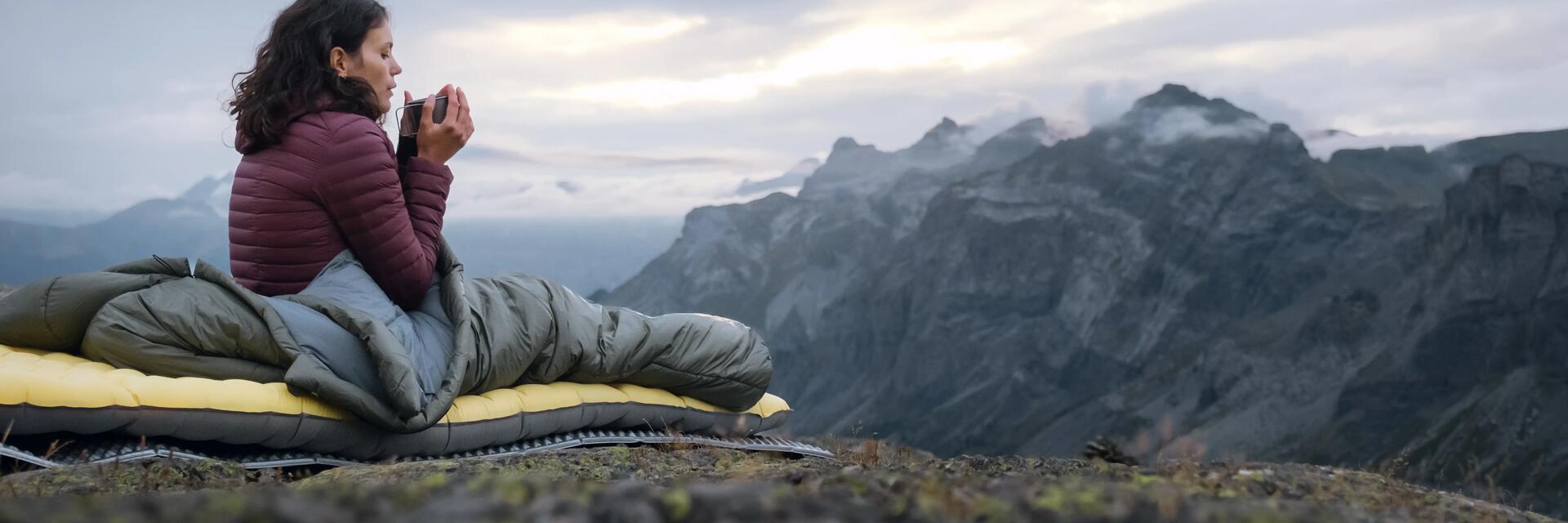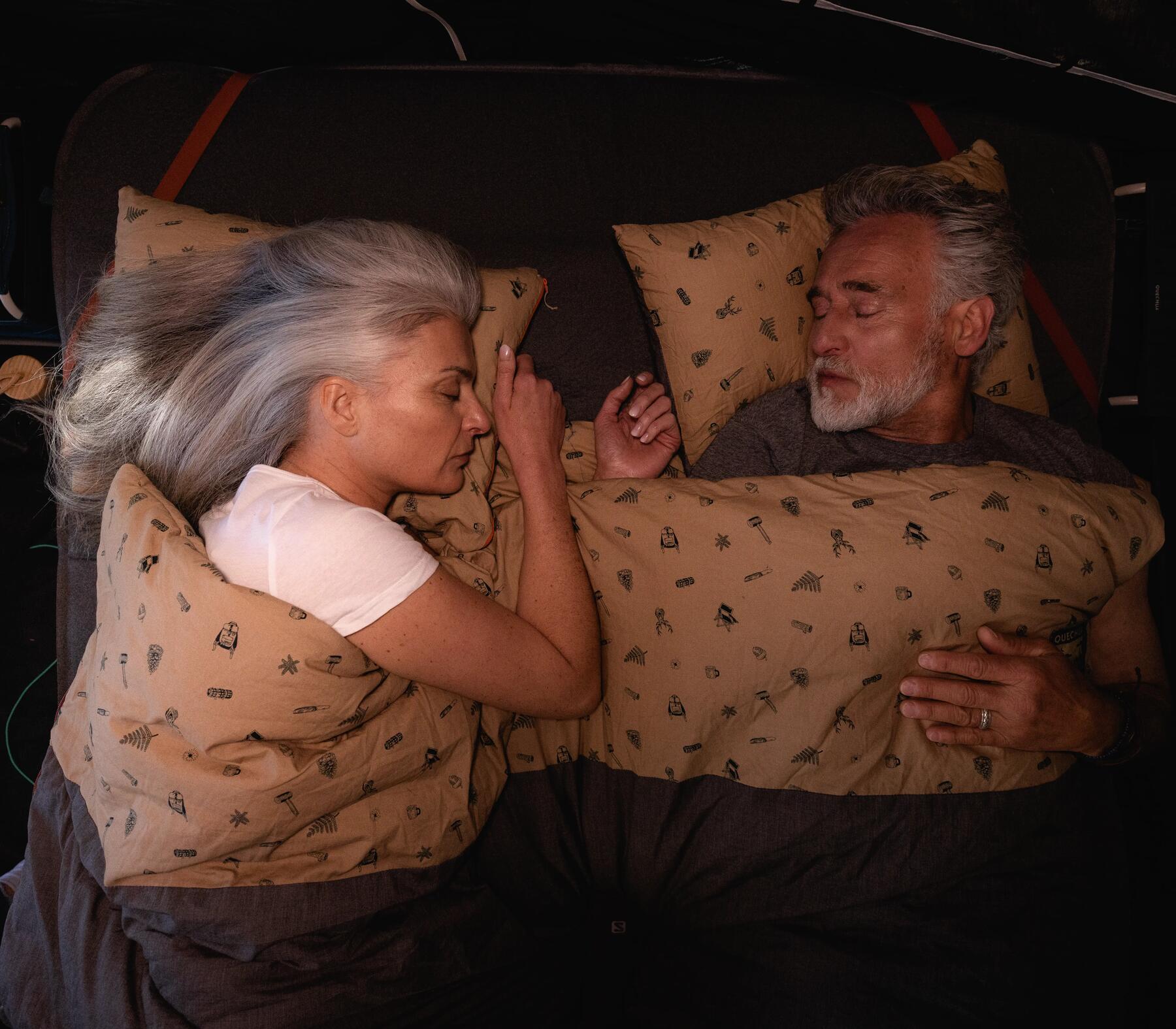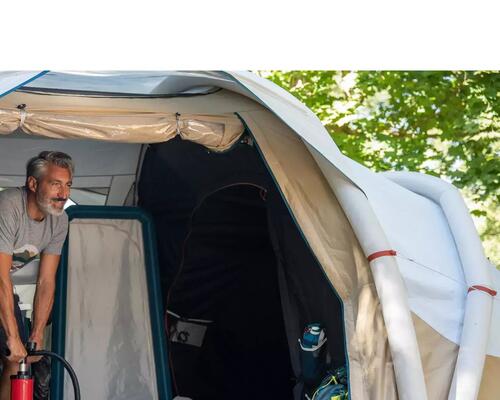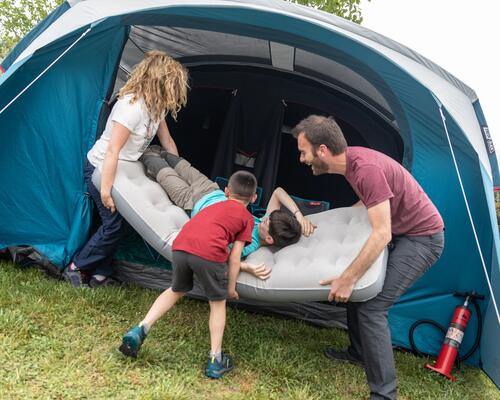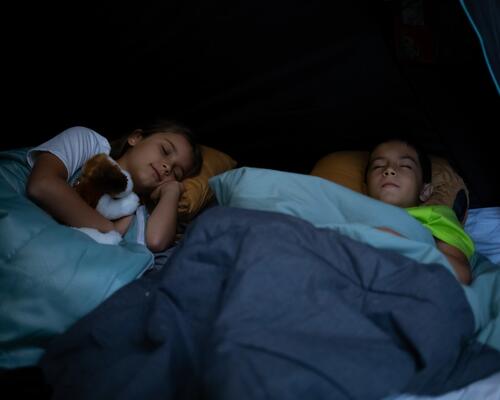You’re going trekking: choose a foam or light self-inflating mattress
If you’re going trekking, the first thing to consider is the weight of the mattress. We recommend you choose a foam mattress, light and very easy to fold or unfold, and carry on your backpack. It looks a little like a gym or yoga mat but its high-tech features take it to a whole new level! Foam mattresses are designed to insulate you from the cold and fully recover after a day’s trekking. How can you be sure of this insulating power? By checking the R-value of your foam mattress (if the R-value doesn't mean anything to you, we'll tell you more about it later in this article).
You also have the option of choosing a self-inflating trekking mattress, making sure you take a lightweight product. When you unfold the mattress, it fills with air, regaining its shape and thickness. By leaving the valve open, self-inflating mattresses generally inflate to 60% after a few minutes. Then, simply finish inflating them by mouth to adjust the pressure as required. This will help save you time and breath.
But beware, we should warn you in advance: trekking mattresses are relatively narrow and slim so they can fit easily into a trekking tent where there's limited space. Some are even narrower at the feet, to make them even more compact. For this type of mattress, no need for a pump, but space is limited!
